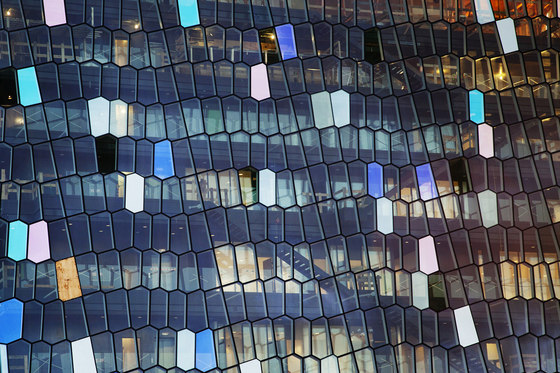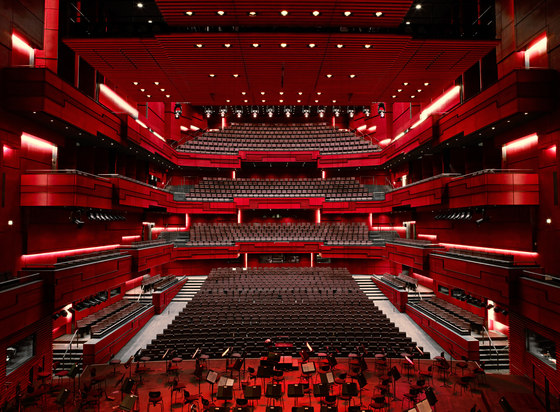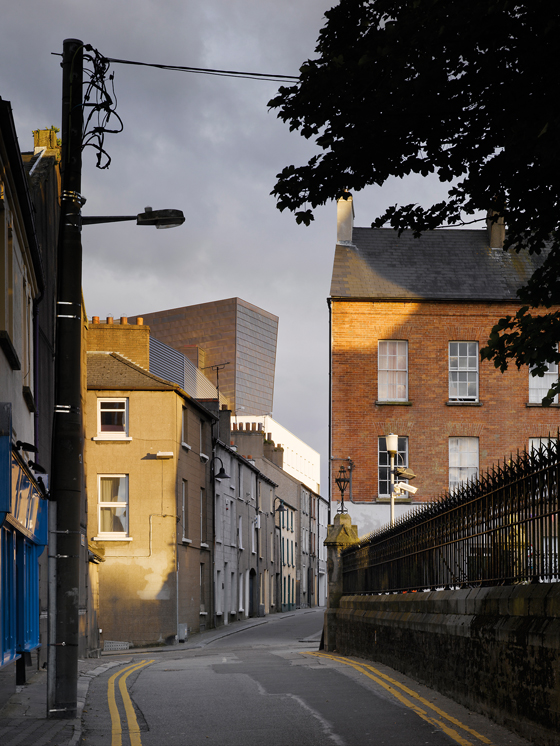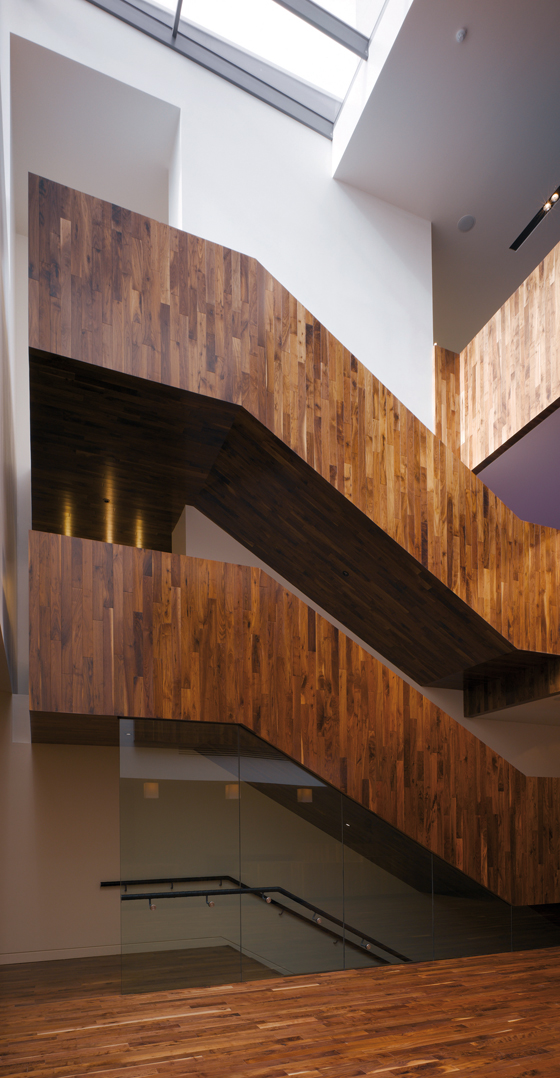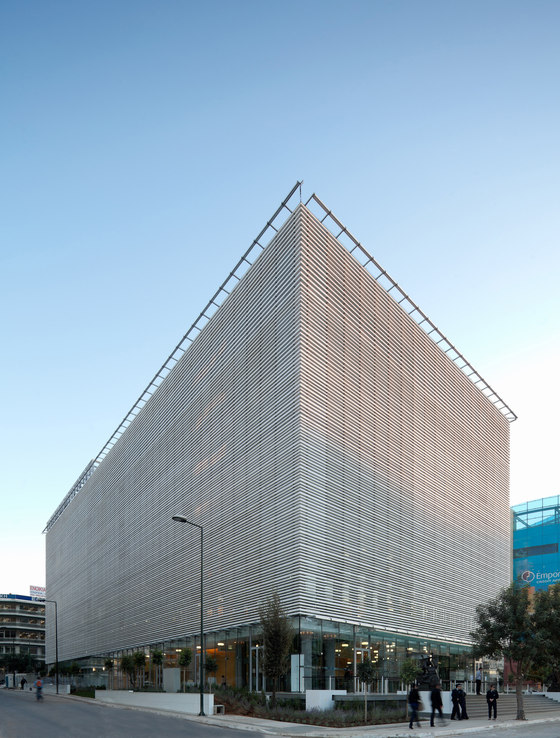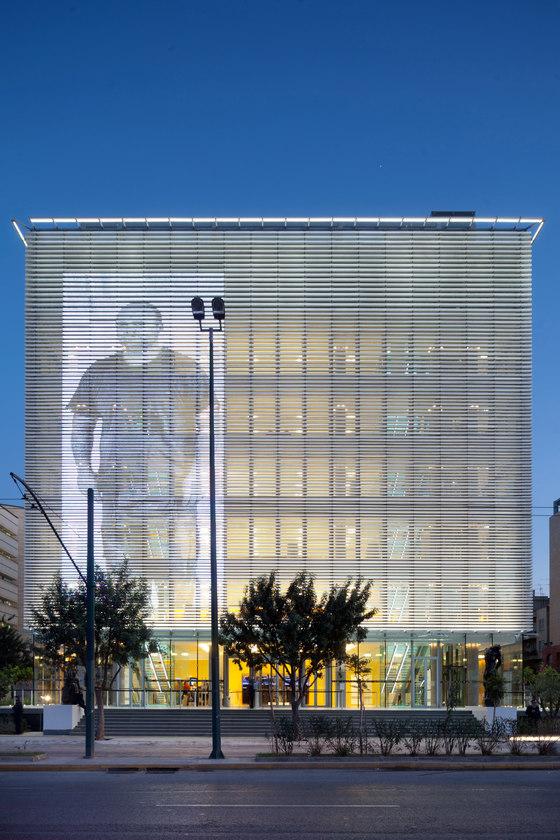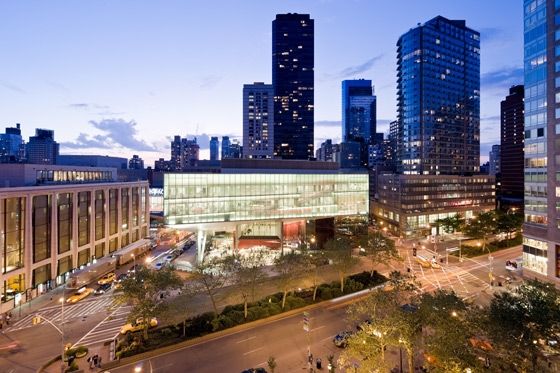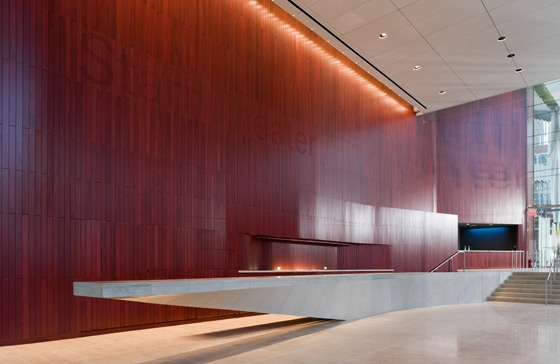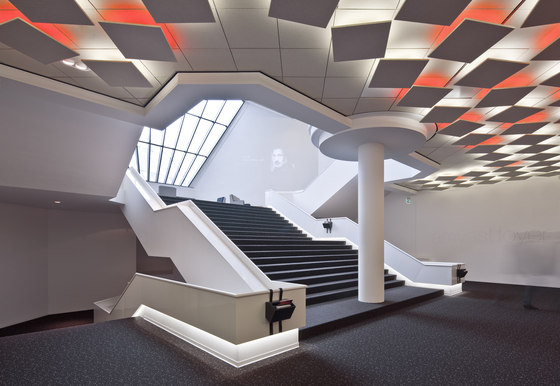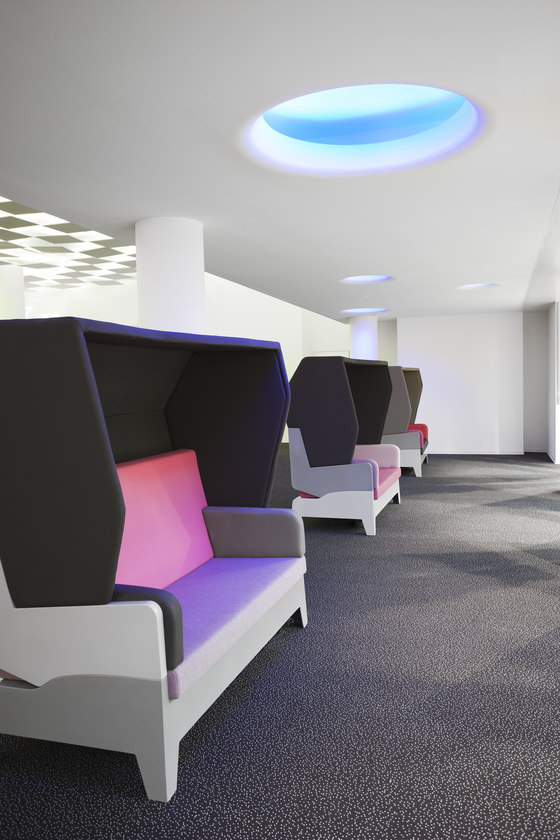High Performance Spaces: concert halls and opera houses that hit the right note
Text von Simon Keane-Cowell
Zürich, Schweiz
29.08.11
If music be the food of love, then where better to dine out than a world-class concert hall or opera house? Here, Architonic examines a number of recently completed architectural projects that perform as hard as the artists who take to their stages. Play on.
Henning Larsen Architects' new Harpa Concert & Conference Centre was conceived of as part of Reykjavik's harbour-development project; photo © Osbjørn Jacobsen

Henning Larsen Architects' new Harpa Concert & Conference Centre was conceived of as part of Reykjavik's harbour-development project; photo © Osbjørn Jacobsen
×Given the digital times in which we live, there's something reassuring about the fact that intelligent, relevant and inspiring performing-arts venues are still managing to be designed and built. In all their glorious materiality, they cock a cultural snook at the ever-growing disembodied consumption of online and downloaded music, dance and other art forms.
The architects collaborated with celebrated Danish-Icelandic artist Olafur Eliasson, whose striking 'quasi-brick' glass façade exploits the natural light of the building's location to produce a dynamic play of colours; photo © Osbjørn Jacobsen
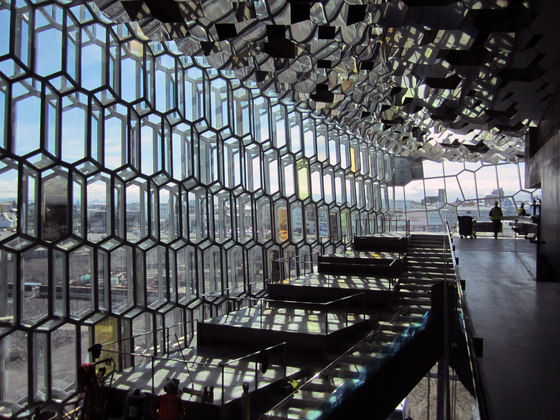
The architects collaborated with celebrated Danish-Icelandic artist Olafur Eliasson, whose striking 'quasi-brick' glass façade exploits the natural light of the building's location to produce a dynamic play of colours; photo © Osbjørn Jacobsen
×Perhaps its a hard-wired social desire that we, as humans, have to congregate and experience performance en masse and unmediated, or maybe it has something to do with the perceived value of such buildings in terms of the cultural profile they can lend a city (and the economic benefits that often attend this), but, whatever the reasons for their continued need, a number of architects are ensuring that newly commissioned concert halls, opera houses and cultural centres in general are as performative in terms of their design as the activities they house.
The main auditorium at the Harpa Concert & Conference Centre; photo © Osbjørn Jacobsen
In terms of timing, there's something both unfortunate and so right about Reykjavik's sculptural new Harpa Concert & Conference Centre, designed by Henning Larse Architects. On the one hand, completing such a costly project at a time when Iceland's economy (and domestic politics) are in crisis, following the collapse of all three of its national banks, is at best foolhardy and at worst unaffordable. (Already underway when the national finances took a nose-dive, the project was, of course, a hostage to temporal fortune to a large extent.) But on the other, a landmark public project such as this one might just have the symbolic capital to play a part in restoring national pride and hope, much in the way that the 1951 Festival of Britain, held at a time of great austerity, did with its future-gazing architectural visions of modernity.
The Wexford Opera House, a collaboration between the Irish state's Office of Public Works and London-based Keith Williams Architects, whose visibility increases the further away from it you are; photos Ros Kavanagh
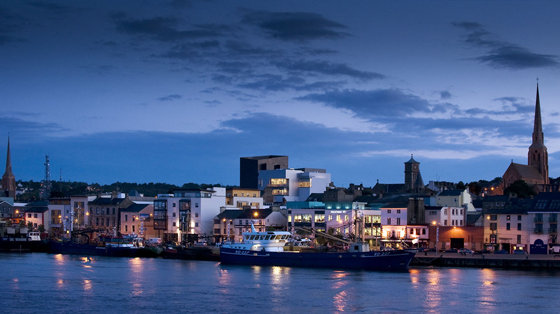
The Wexford Opera House, a collaboration between the Irish state's Office of Public Works and London-based Keith Williams Architects, whose visibility increases the further away from it you are; photos Ros Kavanagh
×The defining feature of the 29,000-square-metre Harpa, conceived of as part of Reykjavik's harbour-development project, is its striking façade treatment, the result of a collaboration between the architects and Danish-Icelandic artist Olafur Eliasson, known for, among other works, his large-scale 'The Weather Project' installation at London's Tate Britain in 2003. Engineered by Rambøll and ArtEngineering GmbH, the skin of the building takes a cue from nature for its design: thanks to the building's exposed location, the reflective potential of its outer surfaces is maximised, as light interacts with its basalt-crystal-inspired geometric pattern to produce a dynamic play of colours, particularly on the south-facing façade, which is composed of over 1,000 of Eliasson's 'quasi bricks'. It comes as no surprise, perhaps, that a country so readily identified (at least abroad) with its unique landscape should rely on the physical natural context of such an iconic architectural project to lend it character and distinction.
Horseshoe-shaped balconies in the main auditorium bring visitors closer to the action, while encouraging people-watching. The entire space is clad in walnut, a material also used generously in the foyer (above); photos Ros Kavanagh

Horseshoe-shaped balconies in the main auditorium bring visitors closer to the action, while encouraging people-watching. The entire space is clad in walnut, a material also used generously in the foyer (above); photos Ros Kavanagh
×If the Icelandic project is all about the façade, then the Irish coastal town of Wexford's opera house, the result of a collaboration between the architectural practice of the Office of Public Works (an Irish state agency) and London-based Keith Williams Architects, is more a case of partial concealment. The literally named Wexford Opera House, which was delivered on a budget of €30 million and enjoys the status of Ireland's first fully specified, purpose-built venue for opera, replaces the old Theatre Royal, which had been the venue for the annual Wexford Opera Festival since 1952. In contradistinction to Harpa, the Wexford project adheres to the adage of modesty being the best policy. At street level, the structure chooses to hide behind a row of reinstated period houses, while its fly tower is visible only from a number of distant viewpoints. Like some kind of Italo Calvino invisible city, the closer you get to this building, the more it disappears.
Frank Gehry's New World Center in Miami Beach, Florida, features an 80-foot-high glass curtain wall and giant LED screen on the exterior, while inside the auditorium sail-like acoustic-panels-cum-projection-screens animate the space; photos Claudia Uribe
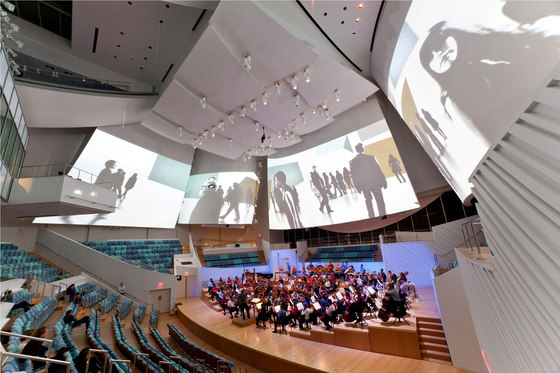
Frank Gehry's New World Center in Miami Beach, Florida, features an 80-foot-high glass curtain wall and giant LED screen on the exterior, while inside the auditorium sail-like acoustic-panels-cum-projection-screens animate the space; photos Claudia Uribe
×Inside is a main auditorium that seats 780 persons, while a smaller, multi-purpose performance space accommodates an audience of 175. Traditional horseshoe-shaped balconies in the auditorium bring visitors closer to the action, while, according to the OPW, 'enhancing the “people-watching” opportunities', and the entire space is clad in walnut. The acoustics arm of Arup were responsible for optimising the sound performance of the hall for opera, while taking other art forms into consideration. It may be all softly spoken on the outside, but, inside, the Wexford Opera House makes sure it gets heard.
Gehry's signature tumbling forms define the foyer of the New World Center, home of the New World Symphony; photo Claudia Uribe
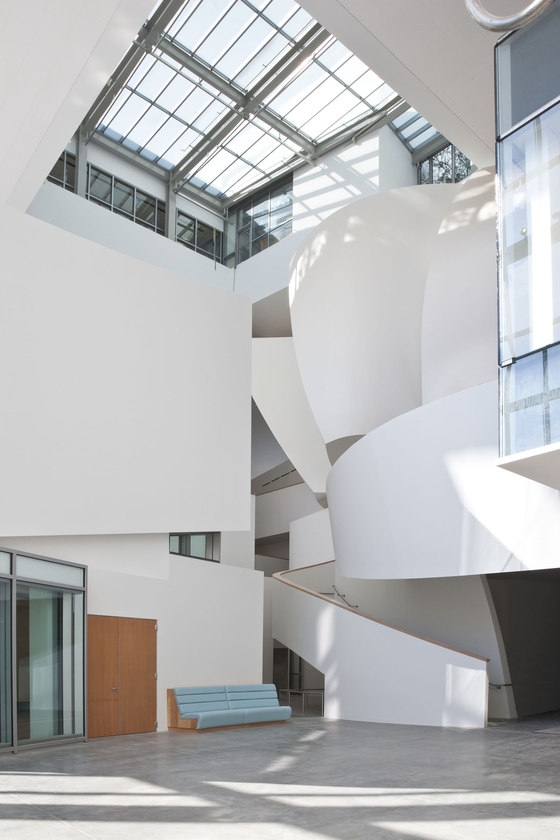
Gehry's signature tumbling forms define the foyer of the New World Center, home of the New World Symphony; photo Claudia Uribe
×From the Irish coast to Miami Beach. Architect Frank Gehry's New World Center, a purpose-built home for the New World Symphony and the grand master's first commission in Florida, meets Wexford's use of traditional materials with high-tech capabilities. The message that this project is 'state of the art' is communicated to visitors before they've entered the building: an 80-foot-high glass curtain wall on the east façade allows views into the structure's interior, with its Gehry-signature cascading forms, and is continued horizontally with a 650-square-foot LED light field, which performs the dual function of providing high-visibility branding and announcing the venue's programming. If Harpa seeks to foreground its façade and the Wexford Opera House performs a partial concealment of its exterior, then the New World Center, with its glass wall, points towards a now-you-see-it-now-you-don't exterior treatment, whose effect is heightened at night when internal illumination at night makes the façade 'disappear'.
Downtown-Athens' Onassis Cultural Centre uses linear pieces of Thassos marble to construct its façade, which, depending on how close or far away you are from it, appears opaque or semi-transparent; photos © Nikos Daniilidis
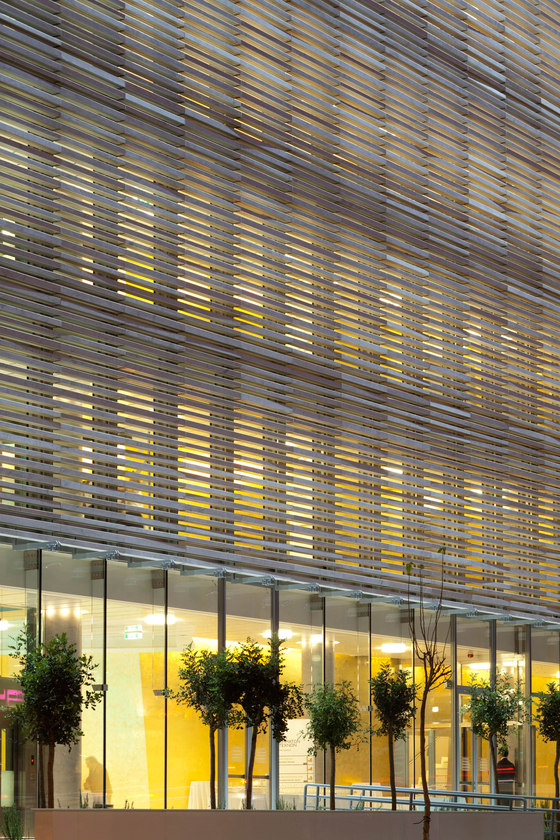
Downtown-Athens' Onassis Cultural Centre uses linear pieces of Thassos marble to construct its façade, which, depending on how close or far away you are from it, appears opaque or semi-transparent; photos © Nikos Daniilidis
×The 756-seater performance hall continues the emphasis on technology. Dual purpose can be found again, this time in the form of the large, 360-degree 'sails' that span the upper half of the space, which function both as acoustic panels, but also double as screens onto which commissioned films and contextual information can be projected from 14 different 30,000-lumen projectors. Sensory overload or a heightened 'concert-going experience', as the architects put it? You decide.
Designed by AS.ARCHITECTURE-STUDIO, the Onassis Cultural Centre contains a 900-seater opera house/theatre, a 200-seater conference hall/cinema, plus an open-air amphitheatre; photos © Nikos Daniilidis
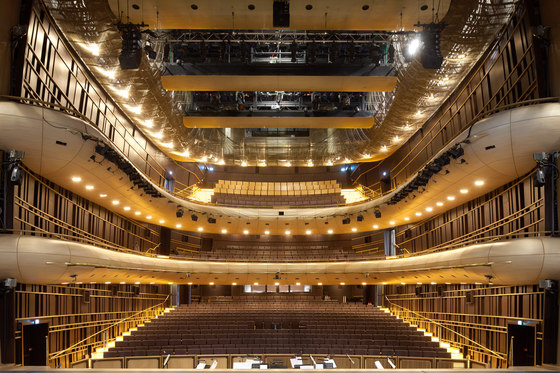
Designed by AS.ARCHITECTURE-STUDIO, the Onassis Cultural Centre contains a 900-seater opera house/theatre, a 200-seater conference hall/cinema, plus an open-air amphitheatre; photos © Nikos Daniilidis
×Greece, like Iceland, is a country that's found itself in a less that advantageous position financially of late. Against this socio-economic backdrop, AS.ARCHITECTURE-STUDIO's downtown-Athens Onassis Cultural Centre, completed at the end of last year, functions as, among other things, an expression of the cultural wealth the country possesses. Built for the Alexander S. Onassis Foundation, the venue – which contains a 900-seater opera house/theatre, a 200-seater conference hall/cinema, an open-air amphitheatre, also seating 200 seats, as well as a library, restaurant and exhibition hall – the structure references classical antiquity in the most contemporary of ways. It consists essentially of a Thassos-marble skinned volume on a glass plinth, the building's façades constituted from a series of thin stone elements, creating a simultaneous opacity and transparency, depending on how close you are to the structure and on the level of internal illumination. The marble membrane also serves as a screen for large-scale projection.
New York practice Diller Scorfidio + Renfro was charged with transforming the Juliard School's Alice Tully Hall into a premiere chamber-music venue. Its new glazed façade at street level replaces the old opaque one; photos DSR (top), Iwan Baan (bottom)
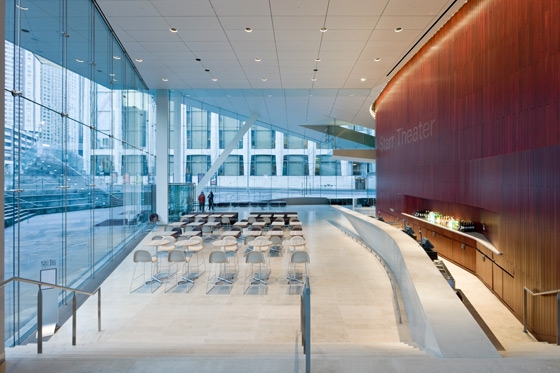
New York practice Diller Scorfidio + Renfro was charged with transforming the Juliard School's Alice Tully Hall into a premiere chamber-music venue. Its new glazed façade at street level replaces the old opaque one; photos DSR (top), Iwan Baan (bottom)
×But, of course, concert halls and opera houses are not just about their exteriors. 'Musicians Hear Heaven in Tully Hall’s New Sound', ran the congratulatory New York Times headline in 2009, as the music community praised the acoustics of the newly redesigned Alice Tully Hall, the Juliard School's concert space, originally completed in 1969 by architect Pietro Belluschi. Charged with reworking the venue, while expanding the music school itself, renowned New York practice Diller Scorfidio + Renfro addressed the part of the brief that called for the transformation of the hall into a premiere chamber-music venue by creating a partial 'box-in-box' construction that isolates the main space from exterior noise (and the vibration from the subway). Thanks to a new glazed façade at street level, which replaces the old opaque one, the inner structure can also be seen from outside.
A partial 'box-in-box' construction isolates the main space from exterior noise (and the vibration from the subway). African moabi wood was used to line the auditorium throughout, giving it a completely new set of acoustic credentials; photos DSR
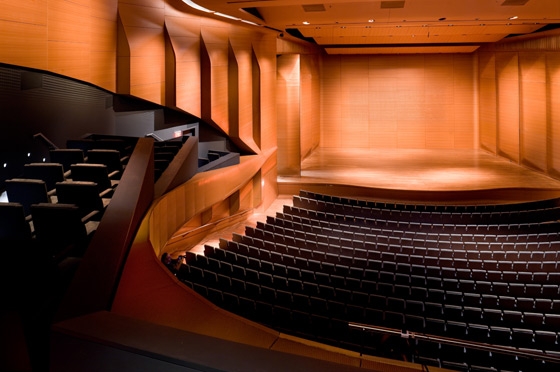
A partial 'box-in-box' construction isolates the main space from exterior noise (and the vibration from the subway). African moabi wood was used to line the auditorium throughout, giving it a completely new set of acoustic credentials; photos DSR
×Inside, a specially engineered African moabi wood was used to line the auditorium throughout, giving it a completely new set of acoustic credentials, while providing a visual unity that helps audiences concentrate on the performance.
Intelligent lighting is used to direct concert-goers intuitively from foyer to auditorium at the refurbished Frits Philips Concert Hall in Eindhoven, Netherlands; photo Frank Tielemans
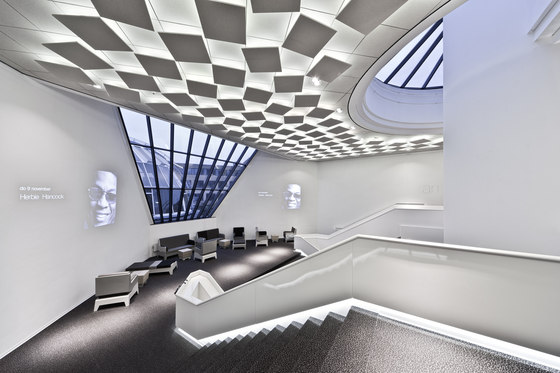
Intelligent lighting is used to direct concert-goers intuitively from foyer to auditorium at the refurbished Frits Philips Concert Hall in Eindhoven, Netherlands; photo Frank Tielemans
×But if it's a true wall-to-wall treatment you want, look no further than the Frits Philips Concert Hall in Eindhoven, Netherlands, refurbished by Niels van Eijk and Miriam van der Lubbe. The word 'Gesamtkunstwerk' comes to mind upon encountering the space, where the interiors, furniture, staff uniforms and even the crockery were all designed by the Dutch duo, in collaboration with Philips Ambient Experience Design. But while the scheme might be a total one in terms of the consideration that's been given to all its various elements, there's still a subtlety about this project. Lighting, for example, provides illumination (as is its utilitarian wont), but it also forms a means of signposting the way from foyer to auditorium, leading guests intuitively. The role of light, and by extension of image, in contrast to the sound-making that takes centre stage at the Frits Philips Concert Hall, is announced, moreover, in the new 13-metre-high angled glass façade that the designers introduced into the front of the building, one of the effects of which is to offer views into the foyer space.
The word 'Gesamtkunstwerk' comes to mind upon encountering the Frits Philips Concert Hall, where Niels van Eijk and Miriam van der Lubbe designed the interiors, furniture, staff uniforms and even the crockery; photos Frank Tielemans
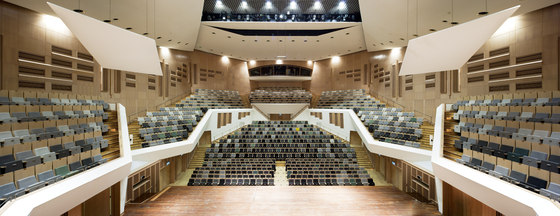
The word 'Gesamtkunstwerk' comes to mind upon encountering the Frits Philips Concert Hall, where Niels van Eijk and Miriam van der Lubbe designed the interiors, furniture, staff uniforms and even the crockery; photos Frank Tielemans
×Van Eijk and Van der Lubbe's description of the Eindhoven project's central idea as 'a meeting place', rather than just a concert hall, underscores neatly what's at stake in all of these recent performance-venue projects. For in these public spaces, it is the public themselves, as much as the music professionals, who are on view. Participation in live cultural events makes you feel, well, alive. Connected. Now, that's got to be better than iTunes.
....

